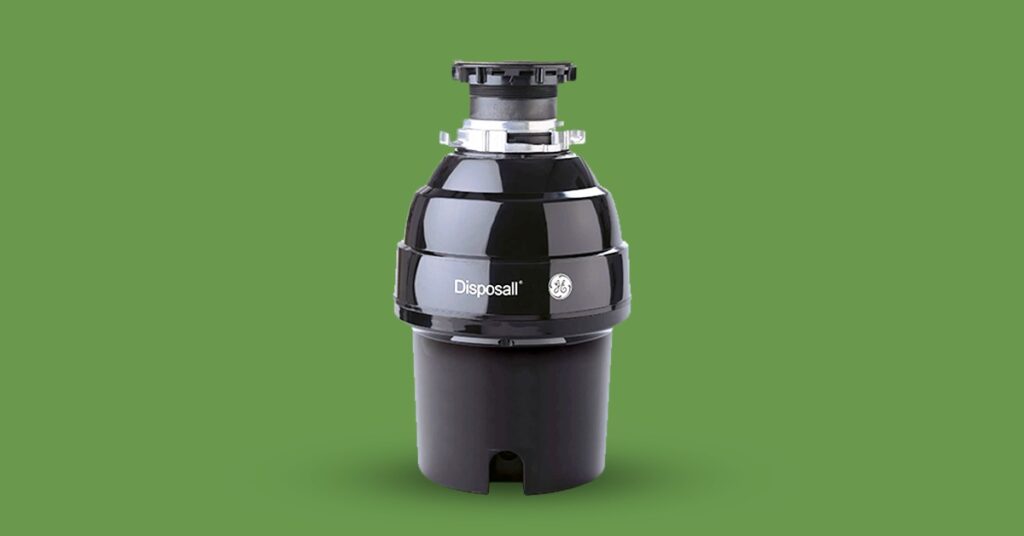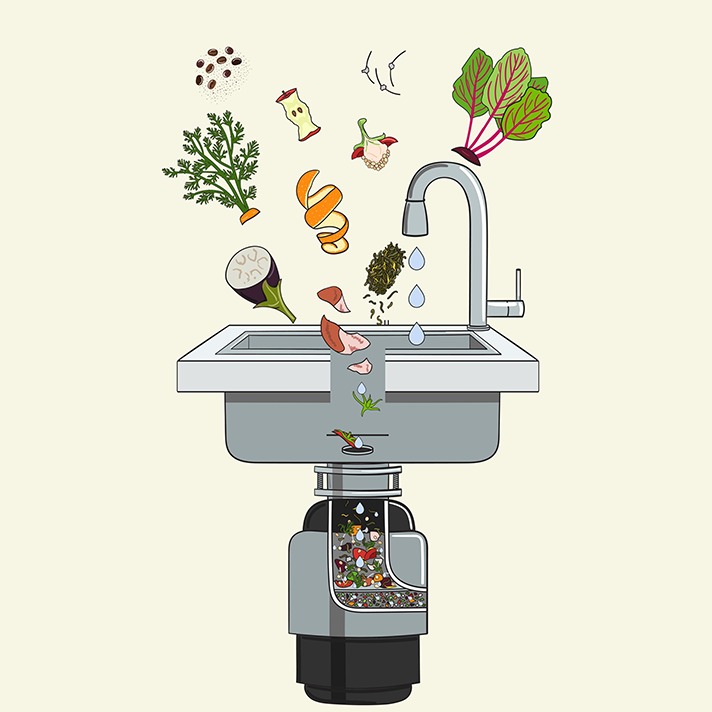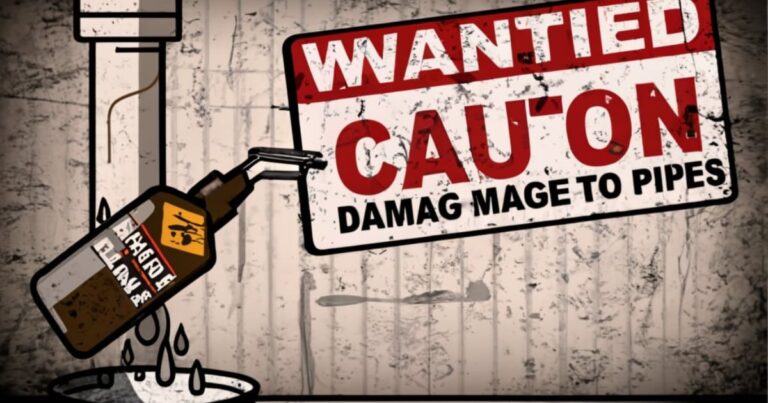
Garbage Disposals are valuable kitchen appliances that provide convenience and efficiency. They are popular in many households because with these appliances its very Convenient to get rid of food waste in kitchen. Today we explore continous garbage disposal, as the name suggests, you can continuously feed food waste into the disposal, and it will keep grinding until you turn it off.
These disposals are compact because they grind food waste continuously, eliminating the need for a large unit. They are designed to fit in small spaces, such as apartment kitchens or under island bar sinks. Installation requires integration into the home’s electrical system.
Benefits of Continuous Feed Garbage Disposals
Continuous feed garbage disposals offer several advantages for homeowners:
- Reduced Risk of Blockage: These disposals grind food waste continuously, preventing blockages in the disposal or storage chamber.
- Efficiency: You can turn on the disposal and let it work while you continue with your tasks. It will keep working until you turn it off.
- Cost-friendly: Many models are affordable, offering great features within your budget.
- Fast Speed: These disposals work quickly, grinding food waste in no time. You don’t need to feed food in batches, saving you time.
- Suitable for Household Use: They are ideal for all households, both small and large, effectively managing food waste without frequent blockages.
How Continuous Feed Works?
Continuous Feed Disposals are commonly used in households. Once installed, you just need to turn it on to operate. They are controlled by a traditional electrical switch or an air pressure switch for added safety.
The sink drain remains open, and the disposal continues to grind food waste while cold water flows until you turn it off. The water flow is crucial as it prevents food from sticking or blocking. When you’re done with your dishes, you can turn it off. Remember to keep hands, unwanted food waste, and small utensils away from the unit while it’s operating.

How to Install a Continuous Feed Garbage Disposal?
Here are the steps to install a Continuous Disposal:
Safety First
- Switch off the power: Ensure safety during installation by turning off the disposal’s power switch.
- Disconnect the existing Disposal: If replacing an old disposal, disconnect it from the electrical and plumbing systems.
Set up the Sink
- Remove the old disposal: Loosen and remove the mounting assembly and disconnect the old disposal unit.
- Clean the sink flange: Remove old plumber’s putty or other sealants from the sink flange.
Mounting the Disposal
Install the mounting assembly: Place the fiber gasket, backup flange, and mounting ring onto the sink flange. Secure them in place using the mounting screws.
Apply Plumber’s Putty: Roll the plumber’s putty into a rope and place it around the underside of the sink flange. Press the flange into the sink drain opening, ensuring a watertight seal.
Connecting the Garbage Unit
Attach the garbage unit: Align the garbage unit with the mounting assembly and turn it clockwise to lock it in place.
Tighten the mounting screws: Use a screwdriver to secure the garbage unit to the mounting assembly.
Connecting the Pipes
Attach the discharge tube: Connect the discharge tube to the disposal discharge outlet using a screwdriver.
Connect the P-trap: Connect the P-trap to the discharge tube and the horizontal drainpipe under the sink. Use an adjustable wrench to tighten the connections.
Electrical Connection
Connect the wiring: Follow the manufacturer’s instructions to connect the electrical wiring. This typically involves connecting the black and white wires from the disposal to the corresponding wires in the electrical box. Secure the connections with wire nuts.
Testing
Turn on the power: Restore power to the disposal by turning on the electrical or control switch.
Test the disposal: Run water and turn on the disposal to check for any leaks or unusual noises. If everything is working correctly, the installation is complete.
Maintenance of Continuous Feed Disposal
Maintain your continuous feed garbage disposal by running cold water, occasionally adding dish soap and citrus peels, and grinding ice cubes with rock salt. Avoid hard items, fibrous materials, and coffee grounds. Clean the rubber baffle, check for leaks, and press the reset button if necessary. Avoid overloading and using harsh chemicals. Consult a professional plumber for persistent issues or unusual noises to ensure optimal performance.
Energy Efficiency
Continuous feed garbage disposals are generally energy-efficient due to their quick operation, on-demand usage, and modern design, including robust yet energy-efficient motors. Their ability to handle various types of food waste efficiently contributes to overall energy savings. Responsible use, avoiding overloading, and adopting good garbage disposal practices further enhance their energy efficiency.
Pros and Cons of Continuous Disposals:
Pros:
- Convenience: Disposing of food scraps is as simple as tossing them down the drain and flipping a switch. No more overflowing compost bins or messy bags.
- Cleanliness: Food waste disappears instantly, reducing kitchen odors and attracting pests.
- Efficiency: Continuous disposals handle large quantities of waste quickly and effectively, ideal for busy families.
- Reduced blockages: The constant grinding minimizes the risk of food clumps getting stuck and causing blockages.
- Versatility: These disposals handle a wide range of food waste, from fruit peels to coffee grounds.
- Energy efficiency: Modern models are designed with energy-saving features and operate on demand.
Cons:
- Cost: Continuous feed disposals are generally more expensive than batch feed disposals.
- Installation: Requires electrical and plumbing connections, potentially necessitating professional help.
- Noise: While operating, they can generate noise, potentially disruptive in open floor plans.
- Water usage: Requires running water while in operation, increasing water consumption.
- Maintenance: Regular cleaning and upkeep are necessary for optimal performance.
- Environmental impact: The ground food particles contribute to wastewater treatment burden and may not be suitable for all septic systems.
- Not suitable for everything: Bones, grease, and certain fibrous materials can damage the blades or cause blockages.
Conclusion
In summary, continuous feed garbage disposal is one of the best home disposal methods. It is easy to operate and energy-efficient. It is easily maintained by homeowners and is easy to install. It quickly grinds waste and helps to eliminate food blockages. It removes food odors and creates a pleasant ambiance in the kitchen.













